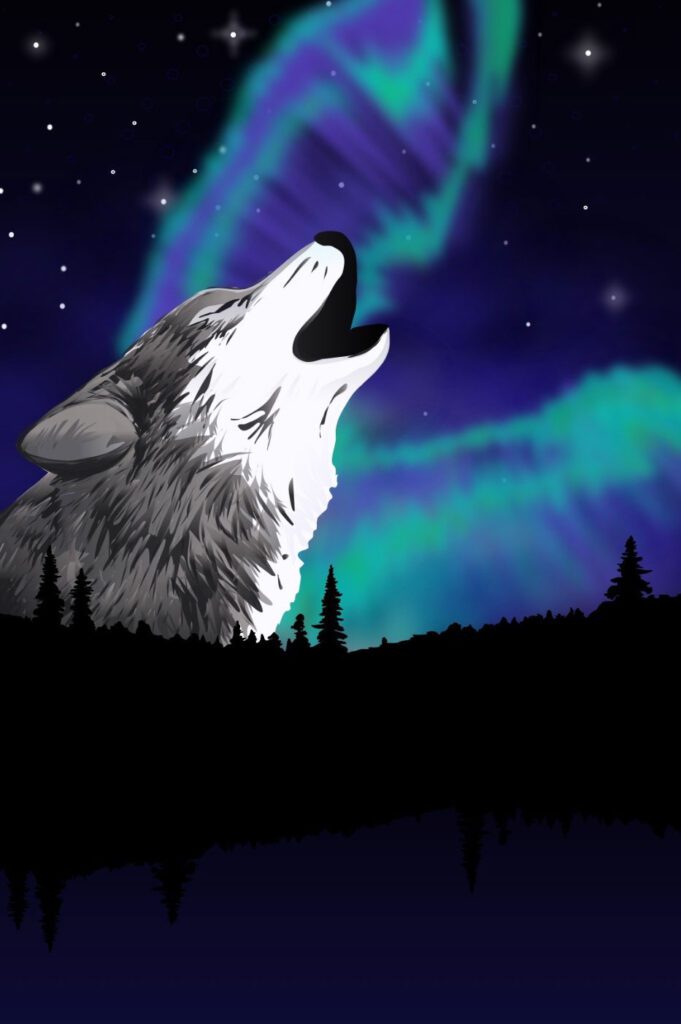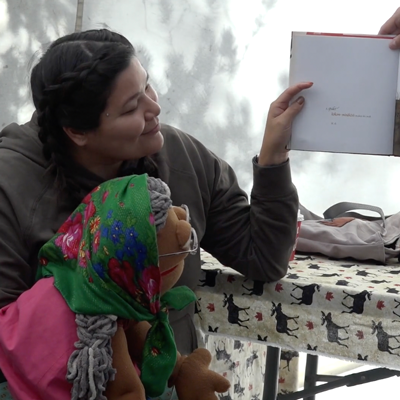Speak Up: SPEAK INDIGENOUS
ihamik *
(speak)
“The [Speak Indigenous] language campaign is intended to promote awareness and to advocate for the creation of safe spaces for our languages. Our message is for everybody, from new language learners, to Indigenous peoples who connect with and have pride in their identities, to businesses and organizations”
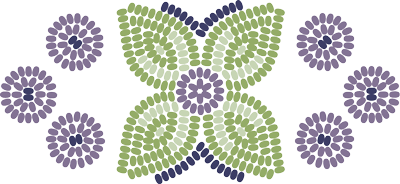
Beadwork done by late Kathleen Mason, mother of Elder Nelliane Cromarty, St. Theresa Point First Nation.
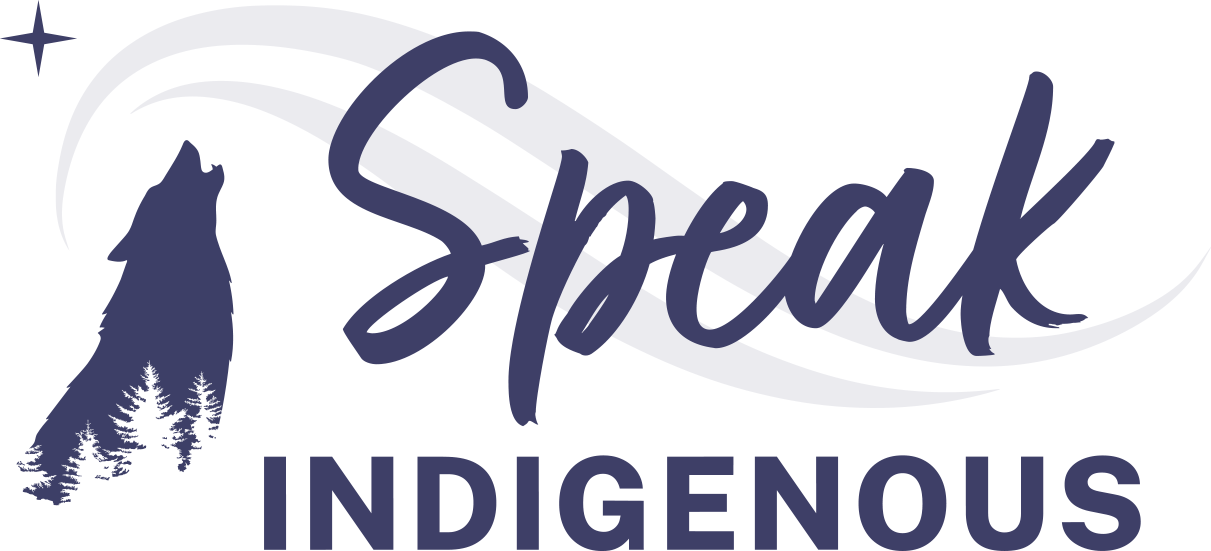
The Speak Indigenous logo reflects Indigenous cultures in Northern Manitoba. In the logo, the wolf, mahikan (Ininimowin or Cree language translation), is used to denote the teaching held by some Indigenous peoples who view it as a master communicator that communicates across great distances. Mahikan (wolf), is a metaphor reminding us to remember the power of our voices and to take up speaking Indigenous languages. The boreal forest, the land, is depicted in the outline of the bush and the star in the night sky represents kihwihtin acahk (North star). The swirl represents the northern lights and is used to embody the sacredness of the language and is understood as a gift from Manito (Creator).
“The wolf’s howl is infinite. Wolves hear each other across great distances beyond [what humans can hear or experience]. To revitalize and embrace our language, we have to hear the wolves from the past. The wolf calls to us across time, experience and assimilation… the wolf’s howl is powerful enough to cross all of that”
Tanya McDougall
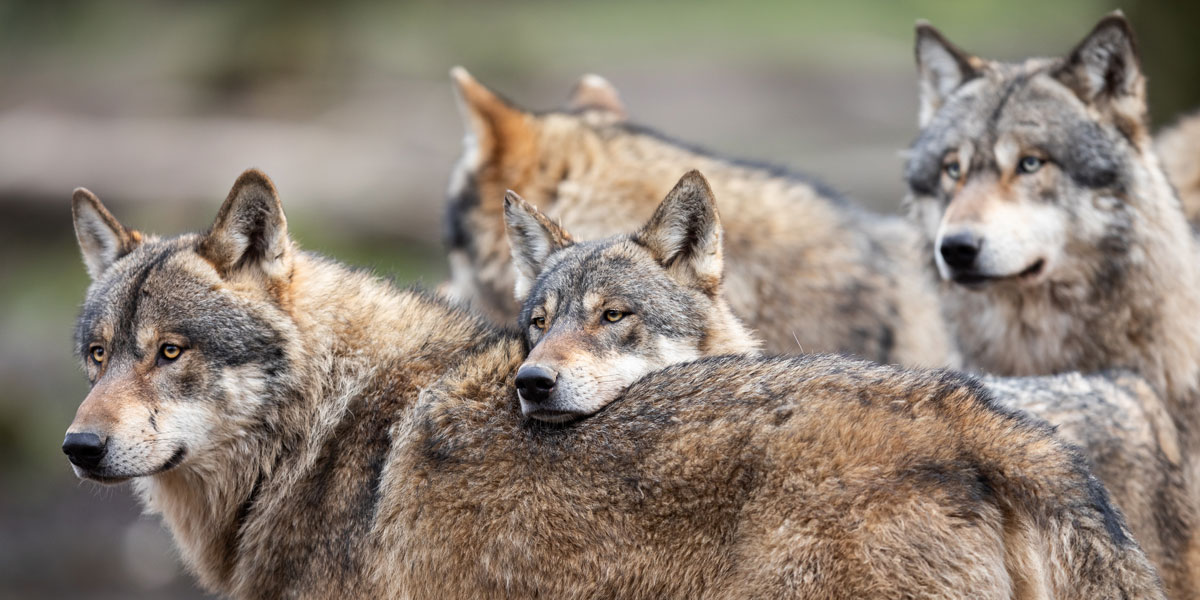
For many Indigenous peoples, the wolf is a bearer of cultural teachings, including teachings about protection, humility, communication and the power of voice. Wolf’s teachings can serve to guide efforts to revitalize Indigenous languages by encouraging us create safe, protected spaces for Indigenous languages; practice humility as speakers and learners; and respond to wolf’s powerful message of language revitalization.
“I was medicine picking with my family on an island in the middle of a huge majestic river when I heard the sound of hooves similar to caribou running. I looked across to the river shore and saw fifteen strong wolves running fiercely and following each other, all running together, making a thundering noise. Then another group of maybe 22 running wolves caught up with the first group, and they joined together into a large, strong group. They ran on the shore with a sense of loyalty, moving together, using their voices, checking to see that everyone was coming along. Wolves are family-oriented and strong. Seeing them touched me inside my spirit”
Lynda Neckoway
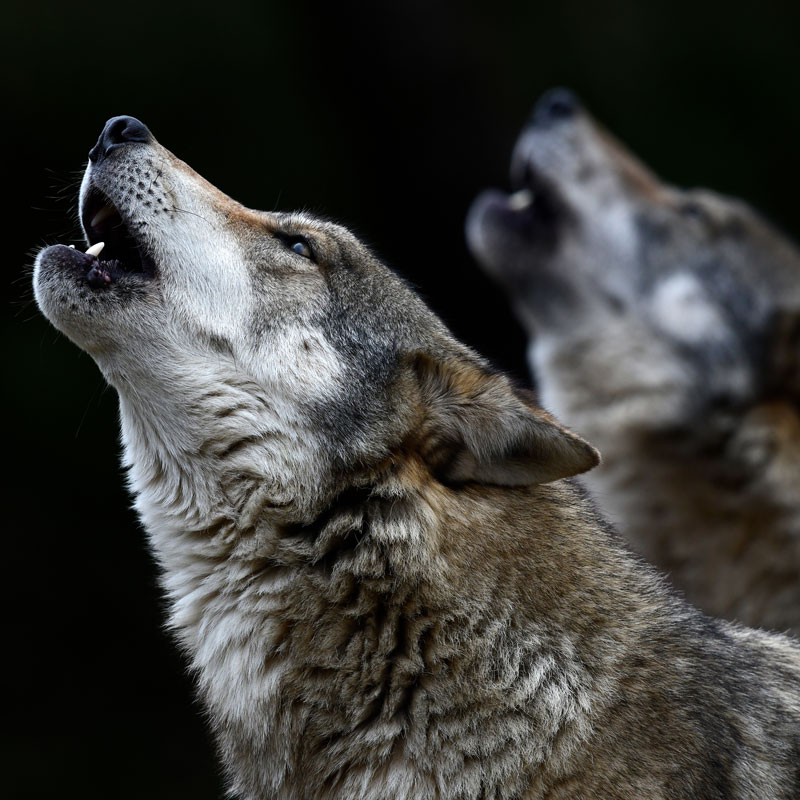
For many Indigenous peoples, the wolf is a bearer of cultural teachings, including teachings about protection, humility, communication and the power of voice. Wolf’s teachings can serve to guide efforts to revitalize Indigenous languages by encouraging us create safe, protected spaces for Indigenous languages; practice humility as speakers and learners; and respond to wolf’s powerful message of language revitalization.
“The wolf reminds us to be humble not only as learners but as language speakers. New language learners need support and encouragement. Speaking and learning a new language can be intimidating and takes courage”
Starlett Beardy
“Dene [have] stories about the wolf’s protective nature; a wolf once protected a woman who got lost in the bush near my First Nation”
Glenn Tssessaze
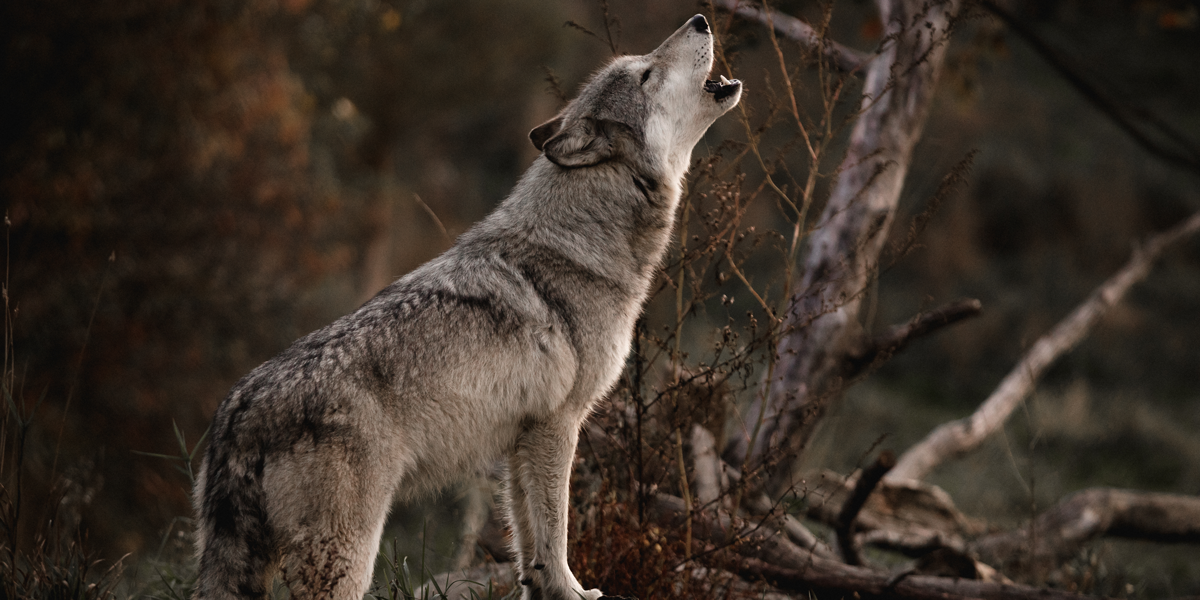
The wolf speaks a powerful language, gifted by Creator, carrying a message of resilience and communication, encouraging us to reconnect, reclaim, and work to revitalize Indigenous languages into the future, calling us to join together in strength and speak.
“In this work, we use the term keewatitaken, going back to the things we left behind. We’re not going back [to recreate and live in a past era]; we’re going back to pick up what we left behind: histories, stories, teachings and language”
Tanya Dawn McDougall
Speak Indigenous resources provides tools to step towards promoting safe spaces for all Indigenous language learners and speakers, including silent speakers, to feel empowered and safe to use their languages in all settings.
Decade of Indigenous Language: (IDIL)
Statistics Canada has recently reported that, “while the work to revitalize Indigenous languages [in Canada] reflects their importance to Indigenous peoples, it also reflects the reality that many languages, which had at one time flourished, have become endangered.” Indigenous languages have been impacted by successive waves of colonial policy, and efforts to preserve and revitalize them will require immediate, concerted and multifaceted approaches.
The United Nations Global Action Plan of the International Decade of Indigenous Languages (2022-2032) calls us to take steps to protect and promote linguistic diversity and multilingualism through focused interventions such as “awareness-raising campaigns…with the aim of promoting multilingual education…and eliminating negative perceptions towards Indigenous Peoples and their languages” (Annex p. 43).
Supporting Indigenous languages
For Educators
As an educator, here are some among many ideas for making Indigenous language and culture visible:
- display artwork
- hang language posters
- view language videos
- invite Indigenous Knowledge Keepers and/or Elders to speak to your class
- learn about smudging and consider integrating into your learning spaces and this may require advocacy and revesting policy
- get to know your Indigenous students and learn about their cultures and languages
- learn to greet your class in an Indigenous language
- before introducing any teachings, allow students time to connect with one another for relationship and kinship-building
- use your students’ Indigenous languages in art projects to show support and create a more inclusive space
- refrain from challenging or “testing” fluent speakers to translate contemporary terms or concepts: Indigenous languages can be specific to territory, place, and context, and not all English terms have Indigenous equivalents
- create a word challenge: encourage students to learn a certain number of words in your class over the term or over the course of an academic year
- plan events that promote community, culture and language-building with students and their families; bring families into the learning spaces
- advocate for Indigenous land-based teachings
- display the Speak Indigenous poster in your classroom, shared spaces and/or on bulletin boards; talk about the initiative and why supporting language learning is important
- e-mail colleagues and contacts to let them know you support Indigenous language learners and silent speakers
- promote safe spaces for Indigenous languages to be spoken proudly
For Non-indigenous Persons
As a non-Indigenous ally, here are some among many ways to support and promote Indigenous languages:
- educate yourself about the history of the place you live and whose traditional lands you live on
- do your own research of cultural traditions and protocols
- ask questions if you are unsure about something
- use your local public library to access resources on Indigenous cultures and languages in your community
- watch and support movies by Indigenous filmmakers
- buy Indigenous literature or borrow from the library
- visit the Speak Indigenous webpage
- share the Speak Indigenous webpage with your friends and family
- learn an Indigenous language: find local language classes or resources online
- participate in Orange Shirt Day, Nation Indigenous People’s Day, and any other Indigenous awareness events in your community
- support Indigenous artists by purchasing jewelry, clothing and art from them directly
- start by learning a few words or a greeting in the Indigenous language(s) of the traditional land(s) you live on
- volunteer for Indigenous programming and get to know Indigenous language speakers
- acknowledge that you are a settler on the traditional lands of the First Nations, Métis, and Inuit peoples and do not take offence at this
For Indigenous Persons
As an Indigenous person or an individual living or working in an Indigenous community, here are some among many ideas to support and promote Indigenous language learning and speaking:
- acknowledge that some people may feel shy and that it is normal to feel shy when learning a new language
- avoid laughing when a new language learner tries to speak
- if you must laugh—as this part of culture—laugh with the learner, not at the learner
- encourage and support new language learners by sharing a story or some new words
- correct new language speakers in a gentle way
- encourage language learners to learn at their own pace
- practice words and terms together

